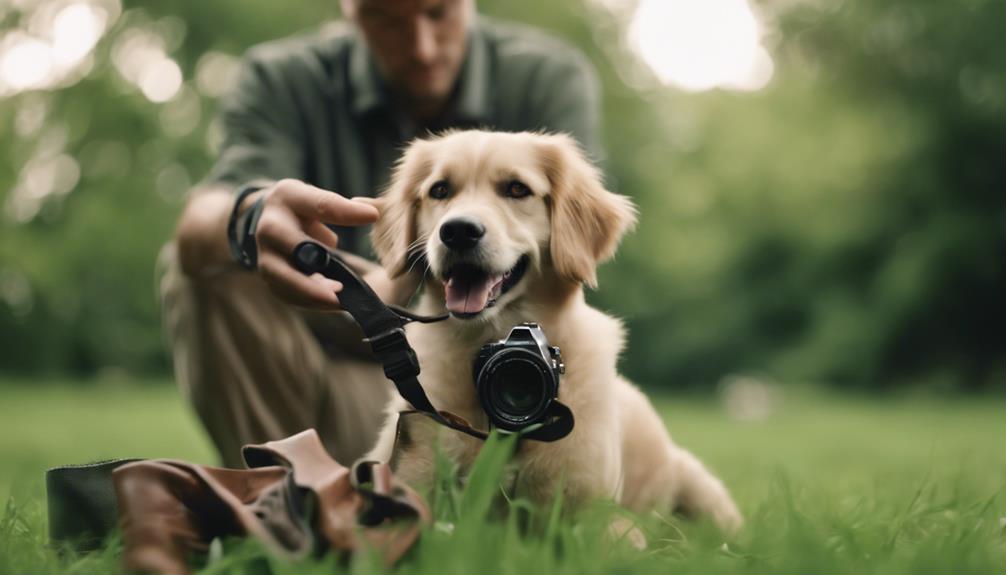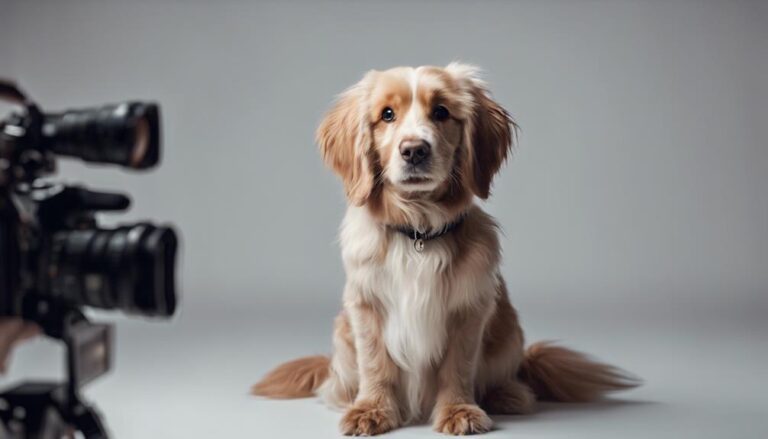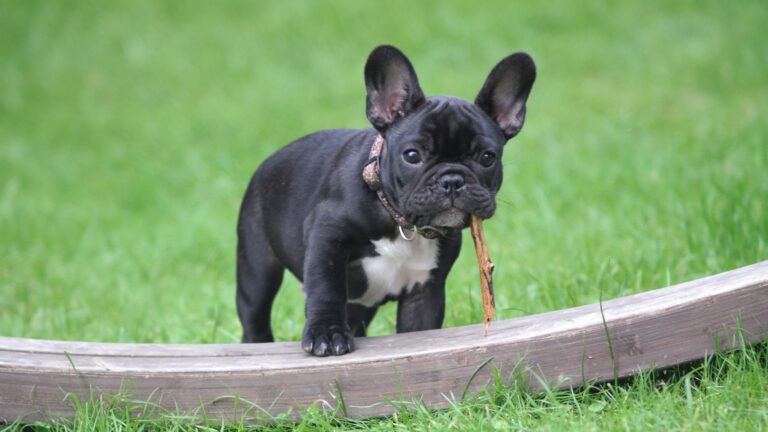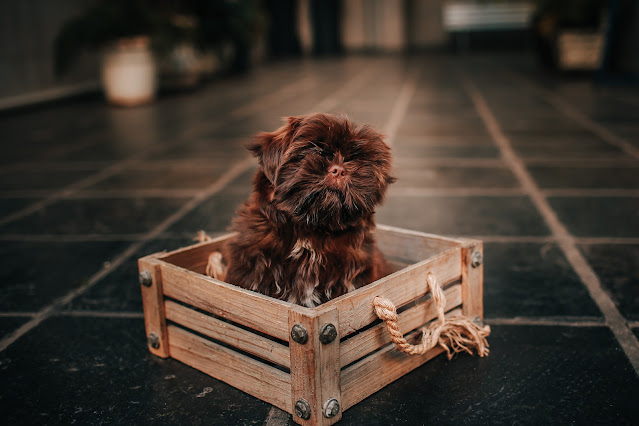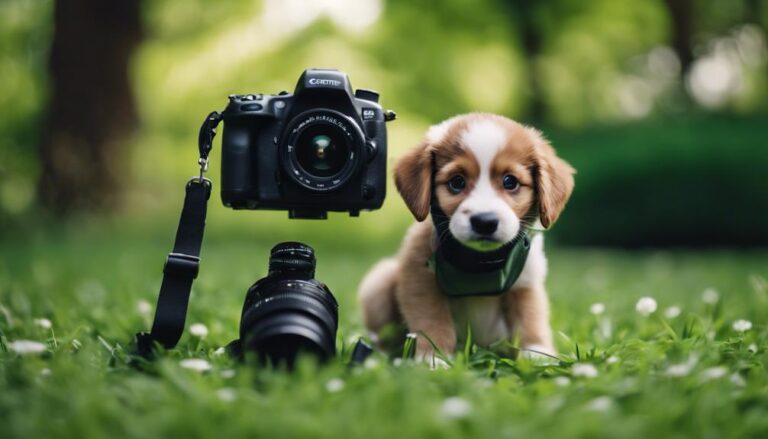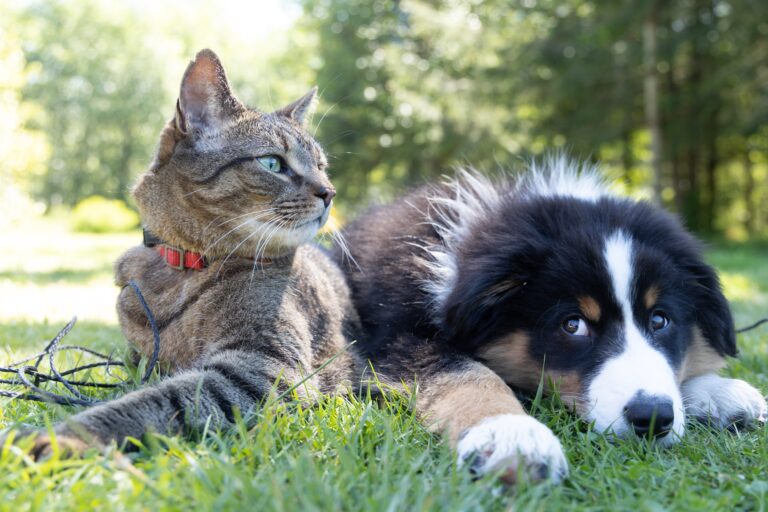Master outdoor pet photography by tapping into natural lighting, choosing the ideal backgrounds, and mastering pet poses. Interpret your pet's body language and capture dynamic action shots. Improve depth of field and regulate their energy levels for vibrant photos. Employ editing techniques to polish your work and develop an exceptional pet photography portfolio. With expert training, you can discover the secrets to capturing stunning shots of your furry friends outside.
Importance of Natural Lighting
When photographing outdoor pets, utilizing natural lighting is essential for capturing their true colors and expressions. The way the light falls on your furry friend can make a significant difference in the final outcome of your photos. Take advantage of the stunning sunset silhouettes or the soft morning glow to add a magical touch to your images. These moments offer a unique atmosphere that can elevate your pet photography to the next level.
The golden hour, that magical time just after sunrise or before sunset, provides a warm and soft light that enhances your pet's features, creating a beautiful and flattering effect. During this time, the light is less harsh, resulting in more vibrant colors and softer shadows. Experiment with backlighting techniques to create a glowing halo around your pet, emphasizing their shape and adding depth to the image.
When shooting outdoors, pay attention to the direction of the light. Position yourself so that the light falls on your pet's face, illuminating their eyes and fur. Avoid shooting directly into the sunlight, as this can cause overexposure and unwanted lens flares. By mastering natural lighting techniques, you can capture stunning photos that truly showcase the beauty and personality of your outdoor pets.
Choosing the Right Backgrounds
To enhance the visual impact of your outdoor pet photography, selecting the right backgrounds plays a pivotal role in framing your furry subjects effectively. When it comes to background selection for outdoor pet photography, there are a few composition techniques to keep in mind to make your images truly stand out.
Firstly, consider the color contrast between your pet and the background. A background that contrasts with your pet's fur color can help them stand out and be the focal point of the image. On the other hand, a background that matches your pet's fur color may create a harmonious and calming effect. Experiment with different background colors to see what works best for your pet's unique characteristics.
Secondly, think about the texture of the background. Textured backgrounds can add depth and visual interest to your photos. Whether it's a rustic wooden fence, a field of flowers, or a brick wall, incorporating textures can elevate the overall look of your outdoor pet photography.
Lastly, location scouting is essential for finding the perfect backgrounds. Explore different outdoor settings such as parks, beaches, forests, or urban areas to discover diverse backgrounds that complement your pet's personality. Keep in mind that a clutter-free background will prevent distractions and keep the focus on your adorable pet. By paying attention to background selection and utilizing composition techniques, you can capture stunning outdoor pet photos that truly shine.
Mastering Pet Poses
Now, let's focus on mastering pet poses. Adjusting your pet's body positioning and capturing their expressive facial expressions are key elements to nail those perfect shots. By following some simple tips and tricks, you'll be able to showcase your pet in the best possible light for stunning outdoor pet photography.
Body Positioning Tips
Wondering how to capture the perfect pet pose in your outdoor photography sessions? When focusing on body positioning, consider the pet's posture and how it fits within the framing of your outdoor setting. Experiment with different angles to find the most flattering positions that highlight your pet's features. Utilize the natural elements of the outdoor environment to enhance the overall composition of your shots. Pay attention to how the pet interacts with the surroundings and adjust their positioning accordingly. By mastering pet positioning and framing within the outdoor setting, you can create stunning photos that showcase your furry friend in the best light. Remember, practice makes perfect, so keep exploring different body positions until you find the ones that work best for your pet.
Expressive Facial Expressions
Experiment with capturing the perfect pet pose by focusing on their expressive facial expressions, which can truly showcase their personality in outdoor photography sessions. When aiming to master pet poses, pay close attention to:
- Emotive Gazes: Encourage your pet to look directly at the camera with a soulful or curious expression.
- Playful Antics: Capture moments of joy and excitement by snapping shots of your pet in action.
- Expressive Ears: Highlight your pet's emotions by observing how their ears are positioned.
- Wagging Tails: A wagging tail can convey happiness and enthusiasm in your outdoor pet photos.
Understanding Pet Body Language
When capturing outdoor pet photos, understanding your pet's body language is key. Pay attention to their communication cues and signals to capture their true essence. Decoding their body language will help you create authentic and engaging pet portraits.
Pet Communication Cues
Understanding your pet's body language is crucial for effective communication and building a strong bond with your furry companion. To interpret your pet's cues accurately, pay attention to the following:
- Tail Wagging: A wagging tail can indicate happiness, but it is vital to take into account the speed and height of the wag.
- Ears Position: The placement of your pet's ears can convey their mood. Forward ears may indicate curiosity or alertness, while flattened ears could suggest fear or aggression.
- Eye Contact: Maintaining eye contact can demonstrate trust, but prolonged staring might be perceived as a threat.
- Posture: Your pet's stance can reveal a lot about their emotions. A relaxed body typically signifies comfort, while a tense body may indicate stress or unease.
Reading Pet Signals
To better understand your pet's feelings and intentions, observing their body language cues is essential. Behavior interpretation is critical in deciphering your pet's communication signals. By recognizing signals such as tail wagging, ear position, and overall posture, you can gain insights into your pet's emotions. Pay attention to subtle cues like lip licking, yawning, or even the direction of their gaze. These details are indispensable for interpreting your pet's state of mind. Understanding your pet's body language is a valuable skill that deepens your bond and enhances communication. Practice signal recognition regularly to become more attuned to your pet's needs and desires. The more you engage in body language understanding, the stronger your connection with your pet will become.
Body Language Decoding
Decoding your pet's body language is essential for strengthening your bond and improving communication. Understanding canine communication involves decoding cues like tail wagging, body posture, vocalizations, and facial expressions. When it comes to feline behavior, interpreting signals such as purring, tail movements, ear positions, and eye dilation is important. By paying attention to these subtle cues, you can better understand your pet's feelings and needs, creating a deeper connection. Remember, each pet is unique, so take the time to observe and learn their individual body language to enhance your interaction and capture authentic moments during your outdoor pet photography sessions.
Capturing Action Shots
Capturing dynamic action shots requires mastering the art of timing and focus. When composing an action shot, consider the movement freeze technique to capture your pet in motion crisply. To achieve this, set your camera to a fast shutter speed to freeze the action mid-stride. Focus on your pet's eyes to add depth and emotion to the shot.
Dynamic pet poses can result in stunning action shots. Encourage your pet to play or run freely to capture their natural movements. Experiment with different angles to add variety to your shots. Remember to stay patient and be prepared to take multiple shots to get the perfect action shot.
Speedy captures are essential when photographing pets in action. Anticipate your pet's movements and be ready to snap the picture at the right moment. Continuous shooting mode can help you capture a series of shots in quick succession, increasing your chances of getting the perfect action shot.
Working With Different Breeds
When photographing pets of different breeds, understanding their unique characteristics and temperaments can greatly enhance your outdoor pet photography sessions. Working with mixed breeds can offer a diverse range of features and behaviors that you can creatively capture in your photos. Here are some tips to help you work effectively with different breeds:
- Consider Breed Specific Features: Each breed has distinct physical attributes that can be highlighted in your photographs. For example, the flowing fur of a Golden Retriever or the expressive eyes of a Border Collie can make for stunning focal points in your images.
- Adapt to Temperament: Different breeds have varying temperaments, so adapting your approach accordingly is crucial. While some breeds may be energetic and playful, others might be more calm and reserved. Understanding these differences can help you tailor your photography techniques to suit each pet.
- Capture Unique Mixed Breeds: Mixed breed dogs often exhibit a blend of characteristics from different breeds, making them truly one-of-a-kind. Embrace the individuality of mixed breeds in your photos by showcasing their unique blend of features.
- Highlight Breed Traits: Whether it's the agility of a Border Collie or the regal stance of a Great Dane, focus on capturing the distinctive traits that make each breed special. Pay attention to details like coat texture, ear shape, and body proportions to showcase these breed-specific features in your outdoor pet photography.
Utilizing Props and Accessories
Improve your outdoor pet photography by integrating props and accessories that complement your furry subjects and add visual interest to your images. Creative prop ideas can range from simple items like hats or bows to more elaborate setups such as miniature chairs or themed backdrops. These props can help bring out the personality of your pet and create a fun and engaging atmosphere for the photoshoot.
When selecting props and accessories, consider stylish options that match the aesthetic you want to achieve. For example, if you're aiming for a rustic look, a bandana or a wooden toy can add a charming touch. Make sure that the props don't overshadow your pet but rather enhance their features and expressions.
Incorporate your props and accessories into the landscape to create cohesive and visually appealing compositions. Whether it's a vibrant flower crown against a lush green backdrop or a cozy blanket on a sandy beach, landscape integration can elevate your outdoor pet photography to the next level.
Color coordination is key when choosing props and accessories. Opt for colors that complement your pet's fur and the surrounding environment. This will help create a harmonious and balanced look in your photos, making your furry friend the star of the show. Experiment with different combinations to find what works best for your pet and the outdoor setting.
Tips for Engaging Expressions
To achieve enchanting outdoor pet photography, focus on eliciting authentic and vibrant expressions from your furry companions. Creating a connection that captures their emotions will result in memorable and impactful images. Here are some tips to help you bring out the best in your pet's expressions:
- Eye Contact is Key: Establishing eye contact with your pet can create a strong emotional connection in the photo. Encourage them to look directly at the camera to convey their emotions effectively.
- Use Treats or Toys: Engage your pet in genuine interactions by using treats or toys to capture playful moments. This can help bring out their natural expressions and personality in the photos.
- Capture Candid Moments: Sometimes the best expressions come when your pet is unaware of the camera. Be ready to snap photos during unguarded moments to capture authentic emotions.
- Get on Their Level: To create a more intimate and engaging photo, try getting down to your pet's eye level. This perspective can result in more compelling and expressive shots.
Enhancing Depth of Field
Using a wider aperture can create a beautiful blurred background in your outdoor pet photography, enhancing the depth of field and drawing focus to your furry companion. When you adjust your aperture settings to a lower f-stop number (wider aperture), it allows more light to enter the lens, resulting in a shallower depth of field. This technique is excellent for portraits as it isolates your pet from the background, making them the clear focal point of the image.
Depth perception is vital in photography, especially when capturing outdoor pet photos. To enhance depth perception, consider using focus stacking. This technique involves taking multiple shots at different focal points and merging them later to achieve a final image with a broader depth of field. It assures that both your pet and the surrounding environment are in sharp focus.
Additionally, experimenting with different aperture settings can help you achieve stunning bokeh effects. Bokeh refers to the aesthetic quality of the out-of-focus areas in your image. By using a wider aperture, you can create pleasing bokeh that adds a dreamy and artistic touch to your outdoor pet photos.
Mastering depth of field through aperture adjustments and techniques like focus stacking can elevate your outdoor pet photography, making your furry friends stand out in captivating and professional-looking images.
Managing Pet Energy Levels
Adjusting your outdoor pet photography session to match your furry friend's energy levels is crucial to capturing lively and engaging shots. To guarantee a successful photoshoot, consider implementing the following energy management techniques:
- Playtime breaks: Allow your pet to release some pent-up energy by incorporating short playtime breaks into the session. This can help prevent them from becoming restless or uncooperative during the shoot.
- Utilize toys: Keep your pet engaged and active by using their favorite toys to grab their attention. Squeaky toys or balls can help maintain their focus and energy levels throughout the session.
- Movement: Encourage natural movements and activities that showcase your pet's energy and personality. Let them run, jump, or play freely while you capture their dynamic moments.
- Positive reinforcement: Reward good behavior and high energy levels with treats or words of encouragement. This can motivate your pet to stay enthusiastic and cooperative throughout the photoshoot.
Editing Techniques for Outdoor Photos
When editing your outdoor pet photos, remember to pay attention to color correction tips for vibrant results. Enhance the natural light in your shots to highlight your pet's features beautifully. Additionally, practice removing distractions effectively to keep the focus on your furry friend.
Color Correction Tips
Enhancing the colors in your outdoor pet photos can bring vibrancy and life to your images. When it comes to color correction, consider these tips to make your pet photos pop:
- Make precise white balance adjustments using editing software for accurate colors.
- Adjust the color temperature to set the mood and tone of your image.
- Use image retouching techniques to enhance the vibrancy of your pet's fur or feathers.
- Experiment with saturation levels to find the perfect balance between natural and vibrant colors.
Enhancing Natural Light
To bring out the natural radiance in your outdoor pet photos, skillful editing techniques can amplify the beauty of the available light. When enhancing natural light in your outdoor pet photography, consider using natural light filters to soften harsh sunlight and improve the overall composition of your images. Outdoor settings provide a wonderful backdrop for your pet photos, allowing the sunlight to create a warm and inviting atmosphere. Make the most of the golden hour, the time shortly after sunrise or before sunset, when the light is soft and enchanting. During this time, the natural light is perfect for capturing stunning outdoor pet photos with a magical glow. Experiment with different editing techniques to enhance the natural light and create mesmerizing images of your furry friends.
Removing Distractions Effectively
One effective way to enhance your outdoor pet photos is by utilizing editing techniques to remove distractions and create a more focused composition. When editing your outdoor pet photos, consider the following tips for distraction elimination and focus improvement in pet photography:
- Use the clone stamp tool: Remove unwanted objects by cloning nearby areas.
- Adjust brightness and contrast: Enhance your pet's features while toning down distracting elements.
- Crop strategically: Eliminate unnecessary background elements to direct focus to your pet.
- Apply selective blurring: Blur the background to make your pet stand out more prominently in the photo.
Creating a Pet Photography Portfolio
When building your pet photography portfolio, focus on showcasing a variety of animals in different settings to highlight your versatility and skills. Start by mastering pet portrait composition and lighting techniques. Experiment with different angles, framing your furry subjects in unique ways to bring out their personalities. Utilize natural light to create warm and vibrant images that capture the essence of each pet.
In addition to composition and lighting, mastering pet photography retouching is essential for creating a polished portfolio. Use editing tools to enhance colors, remove blemishes, and bring out the best in each photo. Remember, retouching should enhance the image without altering the pet's natural appearance.
When capturing outdoor pet poses, consider the environment as part of your composition. Incorporate elements like trees, fields, or bodies of water to add depth and interest to your photos. Experiment with different poses that showcase the pet's movements and personality, whether it's a playful jump or a serene gaze into the distance.
Frequently Asked Questions
How Can I Ensure My Pet Stays Focused During a Photo Shoot in an Outdoor Setting?
To keep your pet focused during a photo shoot outdoors, use training techniques to reinforce good behavior. Manage distractions effectively, offer treat rewards for positive behavior, and use positive reinforcement consistently. This will help your pet stay engaged and cooperative.
What Are Some Tips for Dealing With Unpredictable Weather Conditions When Photographing Pets Outside?
When photographing pets outside, be prepared for unpredictable weather with shelter options and waterproof gear. To combat lighting challenges, have backup plans ready. Stay flexible and adaptable to guarantee successful outdoor pet photography sessions.
Are There Any Specific Safety Measures I Should Take Into Consideration When Photographing Pets Outdoors?
When photographing pets outdoors, prioritize safety precautions. Be mindful of pet behavior, secure equipment, and consider lighting conditions. Keep pets on leashes, watch for hazards, and provide a comfortable environment for them to guarantee a successful photoshoot.
How Can I Incorporate Seasonal Elements Into My Outdoor Pet Photography Sessions?
When photographing pets outdoors, enhance your sessions by incorporating seasonal props and creative backgrounds. Utilize natural lighting and pet accessories to capture the essence of each season, adding depth and personality to your photos.
What Are Some Creative Ways to Incorporate Family Members or Other Pets Into Outdoor Pet Photoshoots?
To creatively include family members or other pets in your outdoor pet photoshoot, consider capturing candid moments that showcase family dynamics and pet interactions. Use location scouting to find the perfect backdrop and props to enhance the overall composition.
Conclusion
Now that you have learned the essentials of outdoor pet photography, it's time to put your skills to the test! Remember to utilize natural lighting, choose the right backgrounds, and capture the unique personalities of your furry subjects. Practice mastering pet poses and understanding their body language to create stunning photos. With patience and practice, you'll soon be on your way to building an impressive pet photography portfolio. Get out there and start snapping!

